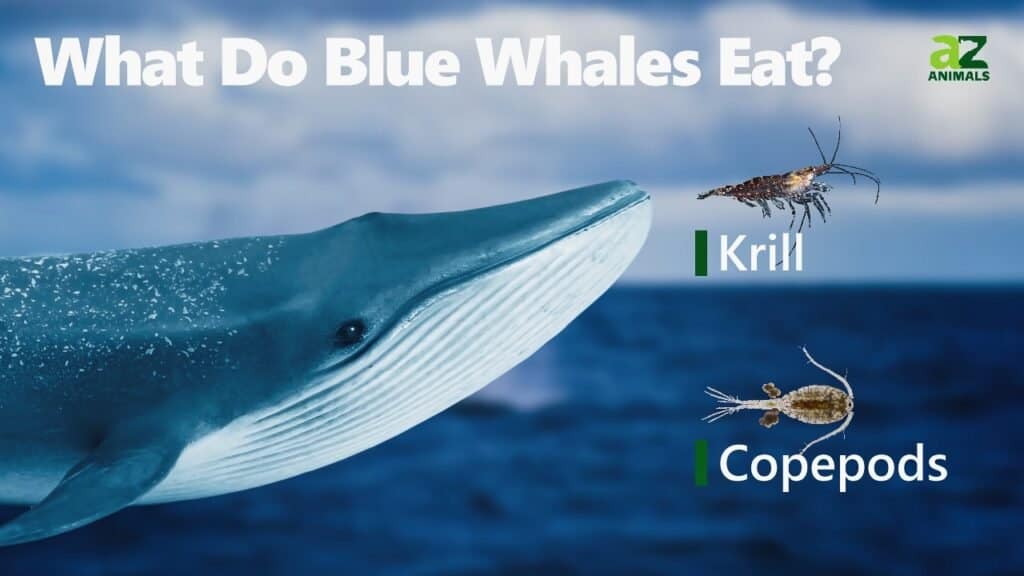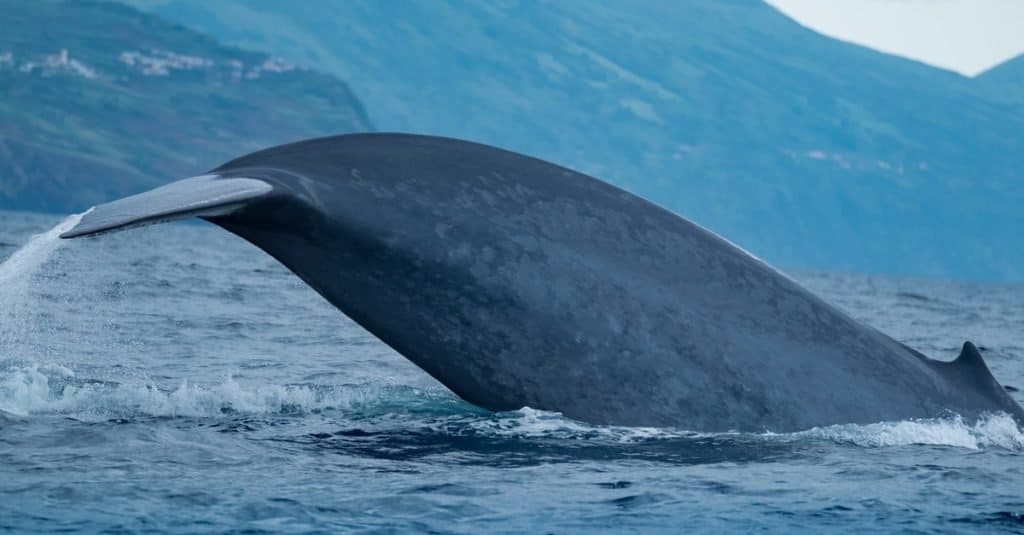
The blue whale has a brain size of about 15 pounds.
©Maria Spb/Shutterstock.com
The blue whale has a large brain that weighs just over 15 lbs, not even making up to 1% of its total body weight. The blue whale’s brain is four times bigger than a human brain. To put that into perspective, a human brain is usually about 1300 cubic centimeters, while a blue whale’s brain is nearly 8,000 cubic centimeters! Let’s find out more about this fascinating animal and its very large brain!
Are There Animals With Brains Larger Than The Blue Whale?

The sperm whale is said to have the largest animal brain on the planet.
©Martin Prochazkacz/Shutterstock.com
There is one other animal in the world with a brain larger than the blue whale. The largest animal brain on the planet belongs to the sperm whale, weighing anywhere from 18 lbs. to 20 lbs. The blue whale’s brain comes in second, even though its body is considerably larger than the sperm whale, making it the largest animal on earth! As for land animals, the elephant has a large brain weighing an average of just over 10lbs. This is not nearly as massive as the blue whales, but still close!
Is The Blue Whale Highly Intelligent Because Of Its Brain Size?
It is said that the bigger the brain the smarter the animal, but that is not always the case when discussing humans and other animals on Earth. As for the most intelligent brain on earth, that would be the human brain; however, animals with very large brains are also incredibly intelligent. Like the human brain, whales’ large brains also evolved through a massive expansion of two brain regions. This is said to have been fueled by changes in their diet. In fact, scientists observed that whales’ brains also evolved just like the human brain because of dramatic growth through the cerebellum and the neocortex. These are two regions of the brain that are important for functions such as movement or attention. Although their brains may be bigger, they are very similar to us in a lot of ways!
What Is The Diet Of A Blue Whale?

The primary food source for blue whales is krill, a tiny crustacean that resembles a shrimp. Blue whales are baleen whales that live in the ocean and eat krill as their primary food source. They can eat more food in a single sitting than any other animal on the planet. This is because they swim through krill swarms with their mouths wide open. According to some estimates, it takes a blue whale 2,200 pounds of krill per day to fill its stomach. However, it can also eat up to 8,000 pounds of krill per day!
When Do Blue Whales Reach Maturity?

Blue whales reach maturity from 5 to 15 years.
©Wild_and_free_naturephoto/Shutterstock.com
Blue whales can meet sexual maturity anywhere between 5 years to 15 years old. They have a gestation period of about 10 to 12 months and typically mate during the winter. The blue whale typically travels alone. However, during late summer and early fall, they begin to form pairs. A male blue whale will likely follow a female blue whale for quite a while, almost as if they are courting! Sometimes a second male will join and almost compete for the female’s attention. This is when the three whales will race along the surface of the water. The more physically fit male usually wins the attention of the female in the end.
How Long Has The Blue Whale Existed On Earth?
It is said that the blue whale has been on Earth for over a million years. The oldest and largest fossil dates to 1.5 million years ago. It is said to belong to a blue whale of nearly 85 feet in length. This fossil has allowed scientists and researchers to discover that the blue whale was not only the largest animal to live prehistorically, but the largest animal to ever live. This fossil also suggests that large whales have been living on Earth dating back to the Pleistocene age.
In Conclusion

Blue whales are endangered due to whaling.
©Andrew Sutton/Shutterstock.com
While the blue whale is the largest animal on earth and has one of the largest brains, it is also an animal that is endangered due to a harmful activity called whaling. Whaling is the process of hunting whales for not only their meat but also their blubber. Because of this, the blue whale was on the verge of facing extinction. Recovery efforts were put in place in 1966. Though those efforts have helped maintain the population of the blue whale, it is still endangered at this time. Whaling is illegal in most countries however it is still a practice commonly used in Iceland, Norway, and Japan.
The photo featured at the top of this post is © Andrew Sutton/Shutterstock.com
Thank you for reading! Have some feedback for us? Contact the AZ Animals editorial team.







